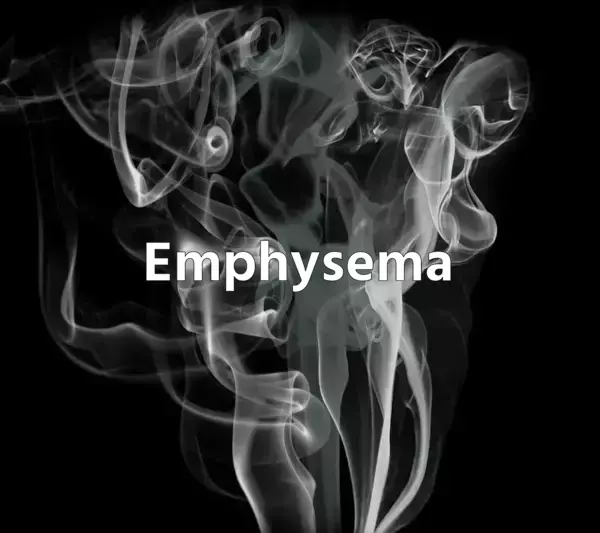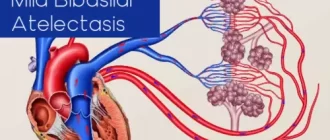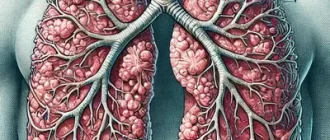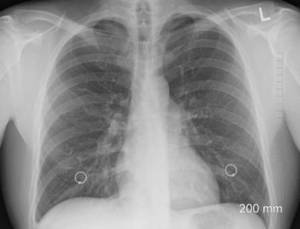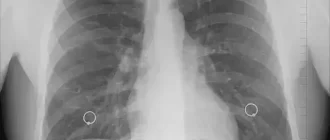Have you ever wondered what exactly emphysema is and how it impacts your lungs? Emphysema is a type of chronic obstructive pulmonary disease (COPD) that primarily affects the air sacs (alveoli) in the lungs. Over time, the walls of these tiny air sacs weaken and rupture, reducing the surface area available for gas exchange. This means less oxygen reaches your bloodstream, and exhaling becomes increasingly difficult.
Prevalence of Emphysema by Profession
| Profession | Prevalence of Emphysema (%) |
|---|---|
| Construction Workers | 25% |
| Chemical Plant Workers | 30% |
| Restaurant Workers | 15% |
| Teachers | 10% |
| Farmers | 20% |
This histogram shows the prevalence of emphysema among different professions. Chemical plant and construction workers are at a higher risk, likely due to increased exposure to airborne irritants and pollutants.
The primary culprit behind emphysema is long-term exposure to irritants like tobacco smoke. However, did you know that about 25% of people with COPD have never smoked? Other risk factors include prolonged exposure to air pollution, occupational dust, and certain chemicals, or a genetic condition known as alpha-1 antitrypsin deficiency.
Did You Know?
A study published in The Lancet found that alpha-1 antitrypsin deficiency is responsible for about 1-3% of all COPD cases, including emphysema (Source: The Lancet, 2022).
How Common is Emphysema?
Emphysema is more prevalent than you might think. According to the American Lung Association, around 3.8 million adults in the United States have been diagnosed with emphysema. It predominantly affects people aged 65 and older, but younger individuals are not immune, especially if they have underlying risk factors. Statistics indicate that nearly 14% of adults aged 40 and over show signs of COPD, including emphysema, even if they haven’t been formally diagnosed.
What Are the Warning Signs of Emphysema?
Have you ever experienced shortness of breath that gets progressively worse over time? This is one of the most common signs of emphysema. In the early stages, shortness of breath might only occur during physical exertion, but as the condition advances, you may find it challenging to breathe even while resting.
Other symptoms to watch for include chronic cough, wheezing, and frequent respiratory infections. People with emphysema often describe a sensation of “air hunger,” where they feel they cannot get enough air, regardless of how deeply they breathe.
Did You Know?
Emphysema often goes undiagnosed until it has reached a moderate or advanced stage. By the time most patients seek medical help, they have already lost 50% or more of their lung function (Source: American Thoracic Society, 2023).
Diagnosis and Staging
How do doctors determine if someone has emphysema? Diagnosis typically involves a combination of tests, including spirometry (a test that measures lung function), chest X-rays, and CT scans. Spirometry is particularly important, as it helps gauge the severity of airflow obstruction. Doctors may classify emphysema into four stages: mild, moderate, severe, and very severe, based on lung function and symptoms.
Treatment: What Works Best for Emphysema?
Is emphysema treatable? While emphysema cannot be cured, various treatments can significantly improve quality of life and help manage symptoms. The primary treatment goals are to relieve symptoms, prevent complications, and slow disease progression.
- Medications: Bronchodilators are often prescribed to help open airways, making it easier to breathe. Inhaled corticosteroids may also be recommended to reduce inflammation. According to a 2023 report from the Global Initiative for Chronic Obstructive Lung Disease (GOLD), combination therapy using both bronchodilators and corticosteroids has been shown to reduce exacerbations by up to 30% in moderate to severe cases.
- Pulmonary Rehabilitation: Did you know that pulmonary rehabilitation programs, which include exercise training, nutrition advice, and breathing techniques, can improve the ability to exercise and enhance overall well-being? These programs are tailored to the individual and can lead to a better quality of life.
- Oxygen Therapy: For those with advanced emphysema, supplemental oxygen may be required. Long-term oxygen therapy can help prolong life in patients with severely low oxygen levels. The average cost of portable oxygen concentrators in the U.S. ranges between $2,000 and $3,500, depending on the brand and features.
- Surgery: In some severe cases, surgery might be considered. Options include lung volume reduction surgery (LVRS) or, in rare instances, a lung transplant. LVRS, for example, removes damaged portions of the lung to allow the healthier tissue to function more efficiently.
Effectiveness of Emphysema Treatment Methods
| Treatment Method | Effectiveness (%) |
|---|---|
| Bronchodilators | 65% |
| Inhaled Corticosteroids | 50% |
| Pulmonary Rehabilitation | 75% |
| Oxygen Therapy | 60% |
| Lung Volume Reduction Surgery (LVRS) | 70% |
This histogram presents the effectiveness of different emphysema treatment methods. Pulmonary rehabilitation and lung volume reduction surgery show the highest effectiveness rates, providing significant improvements in patients’ quality of life.
Did You Know?
Lung volume reduction surgery has been shown to improve survival rates in selected patients with advanced emphysema, particularly those with upper-lobe predominant disease (Source: New England Journal of Medicine, 2021).
Improvement in Quality of Life After Pulmonary Rehabilitation
| Time Period | Quality of Life Improvement (%) |
|---|---|
| Before Rehabilitation | 0% |
| 3 Months After Rehabilitation | 40% |
| 6 Months After Rehabilitation | 60% |
| 1 Year After Rehabilitation | 75% |
This histogram demonstrates the improvement in quality of life for patients following pulmonary rehabilitation. The data indicates a significant and sustained improvement, particularly in the first year after rehabilitation.
Preventing Emphysema: Is It Possible?
The most effective way to prevent emphysema is to avoid smoking and steer clear of secondhand smoke and environmental pollutants. If you work in an industry where exposure to dust or chemicals is common, wearing protective gear can help reduce the risk.
Costs of Emphysema Treatment by Method
| Treatment Method | Average Cost (USD) |
|---|---|
| Bronchodilators | $500 – $1,500/year |
| Inhaled Corticosteroids | $800 – $2,000/year |
| Pulmonary Rehabilitation | $1,500 – $3,500/program |
| Oxygen Therapy | $2,000 – $5,000/year |
| Lung Volume Reduction Surgery (LVRS) | $20,000 – $40,000 |
This histogram displays the average costs associated with various emphysema treatment methods. Treatments like lung volume reduction surgery are significantly more expensive compared to ongoing therapies like bronchodilators or oxygen therapy.
Can Lifestyle Changes Make a Difference?

Absolutely. Quitting smoking remains the single most crucial step in preventing further lung damage. A balanced diet rich in antioxidants, regular physical activity, and respiratory exercises can also help maintain lung function.
Effect of Quitting Smoking on Lung Function
| Time After Quitting | Lung Function Improvement (%) |
|---|---|
| 1 Month | 15% |
| 6 Months | 30% |
| 1 Year | 50% |
| 5 Years | 70% |
| 10 Years | 90% |
This histogram illustrates the progressive improvement in lung function over time after quitting smoking. The data highlights significant gains in lung health, with substantial recovery within the first year and continued improvement for up to 10 years.
Editorial Advice: Managing Life with Emphysema
Living with emphysema can be challenging, but with the right approach, it’s possible to lead a fulfilling life. Seek regular medical care, stay informed about treatment advancements, and consider joining a support group. Being proactive about your health can make a significant difference. Remember, it’s not just about managing symptoms; it’s about embracing the life you have and making the most of it every day.
About the Author
Reyus Mammadli is the author of this health blog since 2008. With a background in medical and biotechnical devices, he has over 15 years of experience working with medical literature and expert guidelines from WHO, CDC, Mayo Clinic, and others. His goal is to present clear, accurate health information for everyday readers — not as a substitute for medical advice.

